Introduction
Video editing has reached new heights with the advent of artificial intelligence (AI). AI-powered video editing apps have transformed the way we create, edit, and produce videos, making the process more intuitive and efficient. This guide explores the top 10 AI video editing apps that are changing the game in video production, detailing their features, functionality, and benefits.
The Evolution of AI in Video Editing
AI technology in video editing leverages advanced algorithms and machine learning to automate complex editing tasks. These apps can analyze video content, suggest edits, enhance quality, and even generate entire video sequences with minimal user input. The evolution of AI in this field has democratized video editing, allowing anyone to produce professional-quality videos effortlessly.
Top 10 AI Video Editing Apps
1. Adobe Premiere Pro
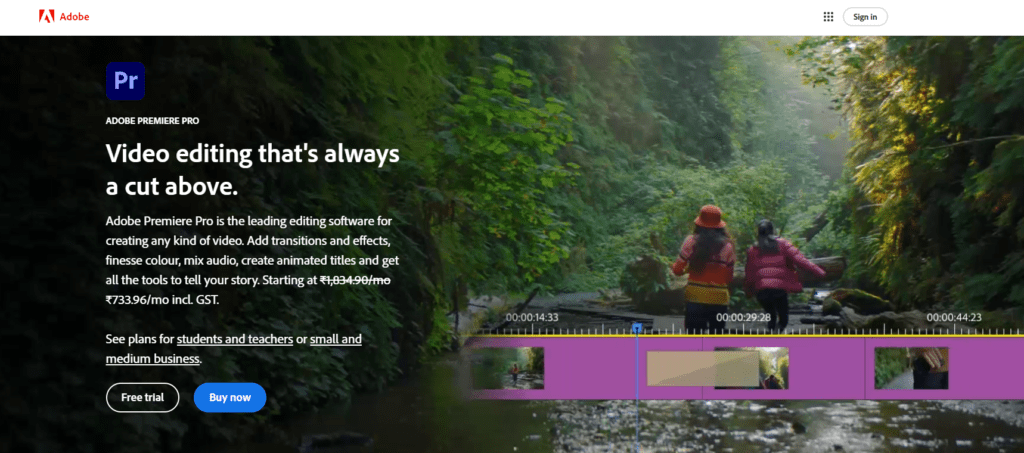
Key Features:
- AI-powered Auto Reframe
- Intelligent audio clean-up
- Scene edit detection
How It Works: Adobe Premiere Pro uses Adobe Sensei, an AI and machine learning framework, to automate tasks such as reframing video for different aspect ratios, enhancing audio, and detecting scene changes. This makes it easier for users to focus on creativity rather than technical details.
Pros and Cons: Pros:
- Comprehensive feature set
- Seamless integration with other Adobe products
- Industry-standard software
Cons:
- Steep learning curve
- Requires a subscription
2. Final Cut Pro X

Key Features:
- AI-driven Smart Conform
- Advanced color grading
- Real-time editing capabilities
How It Works: Final Cut Pro X utilizes AI to automatically conform videos to different aspect ratios, making it ideal for creating content for various platforms. The AI also assists in color grading and real-time effects rendering, ensuring a smooth editing experience.
Pros and Cons: Pros:
- Powerful performance
- Optimized for Mac
- Advanced editing tools
Cons:
- Mac-only software
- High upfront cost
3. Filmora
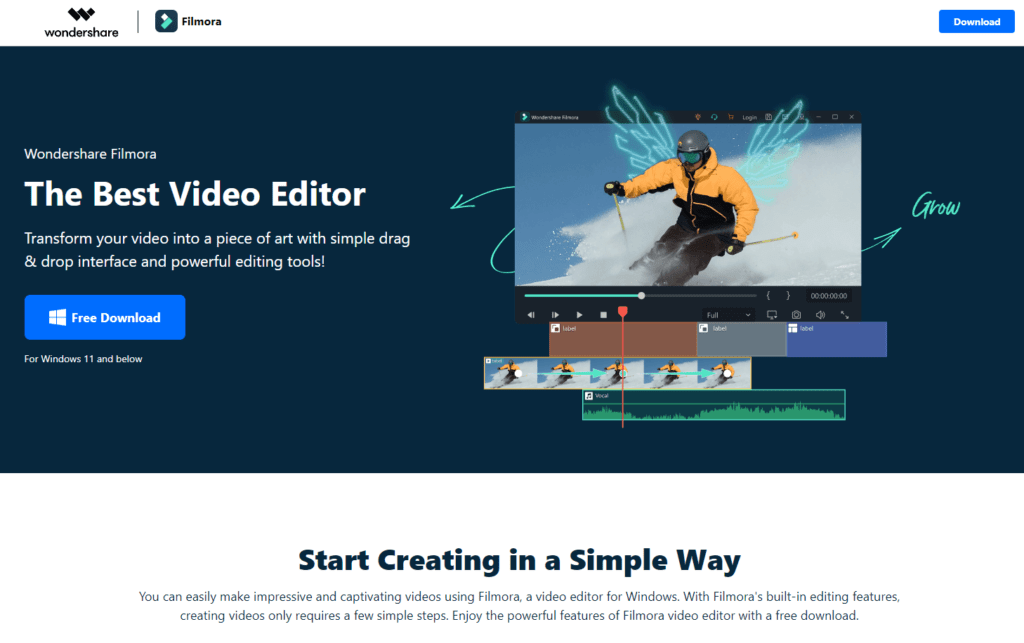
Key Features:
- AI-powered scene detection
- Auto color correction
- Motion tracking
How It Works: Filmora employs AI to detect scenes and suggest edits, making the video editing process faster and more efficient. Its AI tools also include auto color correction and motion tracking, which help in creating professional-looking videos with ease.
Pros and Cons: Pros:
- User-friendly interface
- Affordable
- Wide range of features
Cons:
- Limited advanced features
- Export restrictions in free version
4. Lumen5
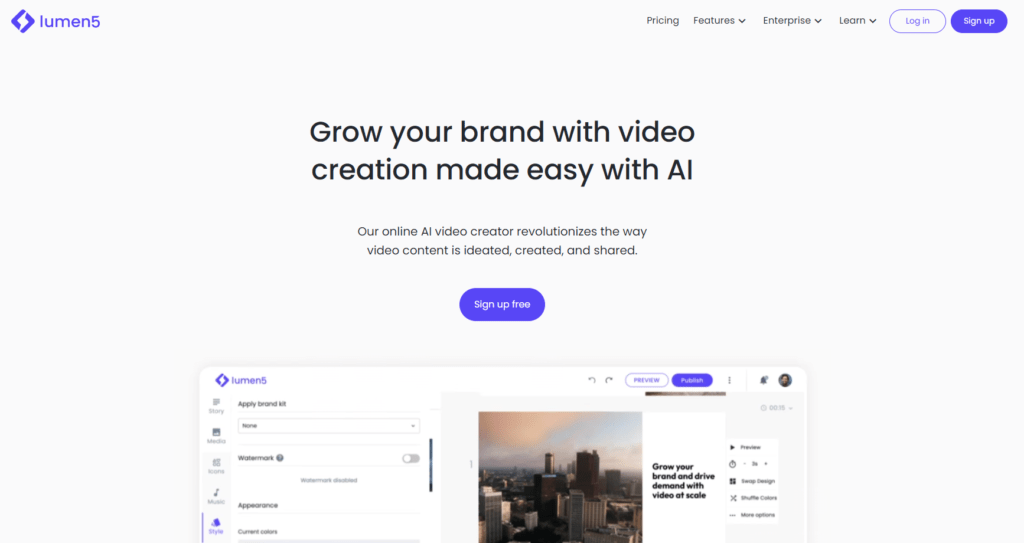
Key Features:
- AI-driven video creation
- Automatic media import
- Text-to-video conversion
How It Works: Lumen5 uses AI to turn text content into engaging video presentations. By analyzing the text, it suggests media, layouts, and transitions that best match the content, making it an excellent tool for marketers and content creators.
Pros and Cons: Pros:
- Easy to use
- Great for social media videos
- Saves time on content creation
Cons:
- Limited customization options
- Subscription required for full features
5. Magisto
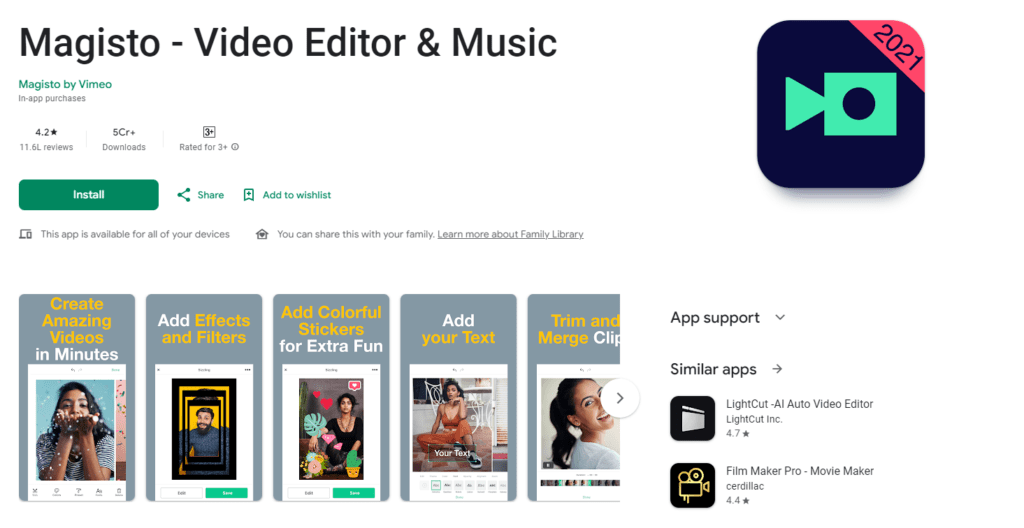
Key Features:
- AI-powered video editing
- Intelligent video stabilization
- Auto-editing capabilities
How It Works: Magisto utilizes AI to analyze video footage, select the best parts, and automatically edit them into a polished video. Its AI also stabilizes shaky footage and applies suitable music and effects.
Pros and Cons: Pros:
- Quick and easy editing
- Great for beginners
- Cloud-based
Cons:
- Limited control over edits
- Requires subscription for premium features
6. InVideo
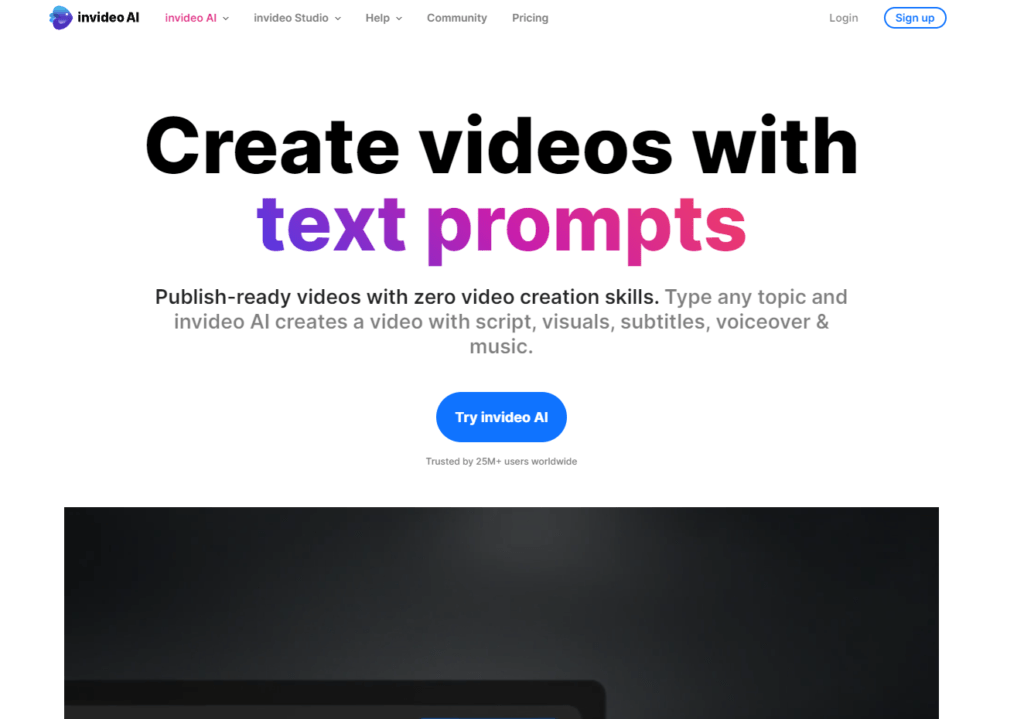
Key Features:
- AI-driven templates
- Automated text-to-speech
- Intelligent media library
How It Works: InVideo leverages AI to provide users with customizable templates, making video creation straightforward. The AI also assists with text-to-speech conversion and suggests relevant media from its extensive library.
Pros and Cons: Pros:
- Easy to use
- Extensive template library
- Great for social media content
Cons:
- Limited advanced editing tools
- Requires internet connection
7. Animoto

Key Features:
- AI-powered storyboard creation
- Automatic video formatting
- Music and text integration
How It Works: Animoto’s AI creates storyboards based on the uploaded media and desired themes. It automatically formats videos for different platforms and integrates music and text to produce engaging content quickly.
Pros and Cons: Pros:
- Fast video creation
- User-friendly
- Suitable for marketing videos
Cons:
- Limited customization
- Subscription required for full features
8. DaVinci Resolve
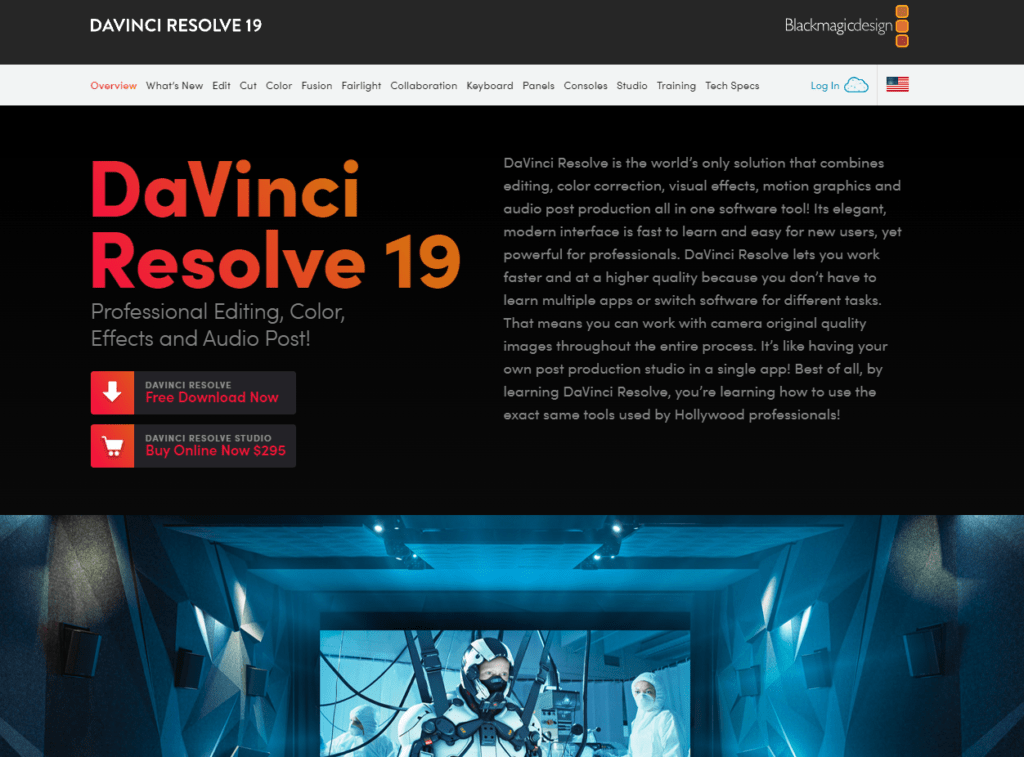
Key Features:
- AI-driven color correction
- Facial recognition
- Neural Engine for speed optimization
How It Works: DaVinci Resolve uses AI for advanced color correction and facial recognition, enhancing the editing process by making it more efficient and accurate. Its Neural Engine optimizes performance for faster rendering and real-time effects.
Pros and Cons: Pros:
- Professional-grade tools
- Free version available
- Advanced color grading
Cons:
- Steep learning curve
- Resource-intensive
9. PowerDirector
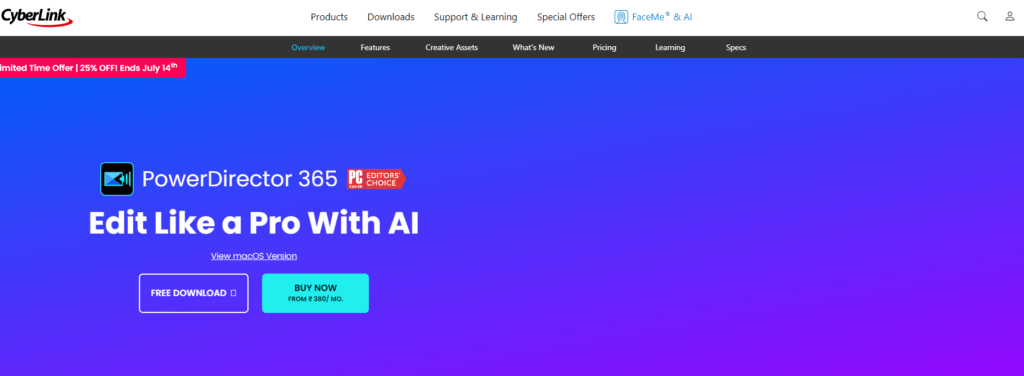
Key Features:
- AI-powered motion tracking
- Auto scene detection
- AI style transfer
How It Works: PowerDirector uses AI for precise motion tracking and scene detection, making it easier to edit complex video projects. Its AI style transfer allows users to apply artistic effects to videos, transforming them into visually stunning creations.
Pros and Cons: Pros:
- Easy to use
- Fast rendering
- Affordable
Cons:
- Limited advanced features
- Some tools require in-app purchases
10. WeVideo
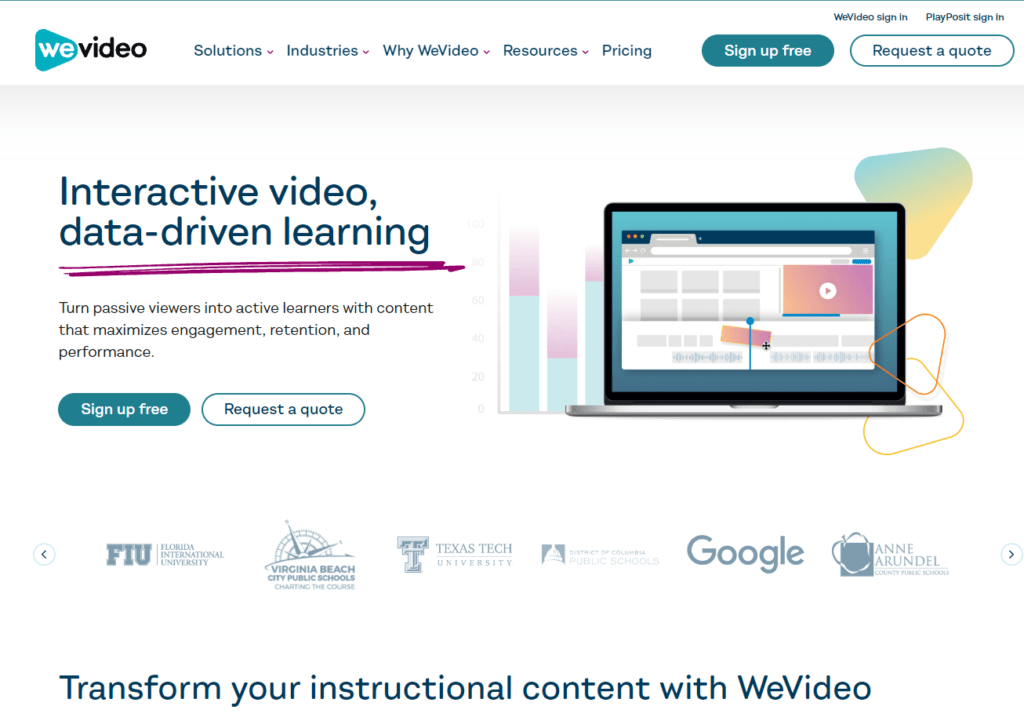
Key Features:
- AI-driven storyboard creation
- Cloud-based editing
- Real-time collaboration
How It Works: WeVideo’s AI helps create storyboards by suggesting layouts and transitions based on the uploaded media. Being cloud-based, it allows real-time collaboration, making it a great choice for teams working on video projects.
Pros and Cons: Pros:
- Cloud-based convenience
- Real-time collaboration
- User-friendly
Cons:
- Limited offline capabilities
- Subscription required for premium features
Comparison Table of Top AI Video Editing Apps
| App | Key Features | Pros | Cons |
|---|---|---|---|
| Adobe Premiere Pro | Auto Reframe, Audio clean-up, Scene detection | Comprehensive, Seamless integration, Industry-standard | Steep learning curve, Subscription |
| Final Cut Pro X | Smart Conform, Color grading, Real-time editing | Powerful, Optimized for Mac, Advanced tools | Mac-only, High cost |
| Filmora | Scene detection, Auto color correction, Motion tracking | User-friendly, Affordable, Wide features | Limited advanced features, Export restrictions in free version |
| Lumen5 | Video creation, Media import, Text-to-video | Easy to use, Great for social media, Time-saving | Limited customization, Subscription |
| Magisto | Auto editing, Video stabilization, Intelligent editing | Quick, Beginner-friendly, Cloud-based | Limited control, Subscription |
| InVideo | Templates, Text-to-speech, Media library | Easy to use, Extensive templates, Social media focus | Limited advanced tools, Internet required |
| Animoto | Storyboard creation, Video formatting, Music integration | Fast, User-friendly, Marketing suitable | Limited customization, Subscription |
| DaVinci Resolve | Color correction, Facial recognition, Neural Engine | Professional, Free version, Advanced grading | Steep learning curve, Resource-intensive |
| PowerDirector | Motion tracking, Scene detection, Style transfer | Easy to use, Fast rendering, Affordable | Limited advanced features, In-app purchases |
| WeVideo | Storyboard creation, Cloud-based, Collaboration | Cloud-based, Real-time collaboration, User-friendly | Limited offline, Subscription |
Choosing the Right AI Video Editing App for You
Selecting the right AI video editing app depends on your specific needs and preferences. Adobe Premiere Pro and Final Cut Pro X are excellent for professional editors who need comprehensive tools and seamless integration with other software. Filmora and PowerDirector offer user-friendly interfaces that are perfect for beginners and intermediate users. For social media content creators, Lumen5 and InVideo provide intuitive templates and easy editing capabilities. Consider the features, pros, and cons of each app to find the best fit for your video editing requirements.
FAQs
What are AI video editing apps?
AI video editing apps use artificial intelligence to automate and enhance the video editing process. These apps can analyze footage, suggest edits, improve quality, and even generate videos with minimal user input.
Are AI video editing apps free?
Many AI video editing apps offer free versions with basic features. However, access to advanced tools and functionalities usually requires a subscription or one-time purchase.
How does AI improve video editing?
AI improves video editing by automating complex tasks, such as scene detection, color correction, and motion tracking. This allows users to focus more on creativity and less on technical details.
Which AI video editor is best for beginners?
For beginners, Filmora and Magisto are great choices due to their user-friendly interfaces and automated editing features. These apps provide easy access to a variety of editing tools without requiring advanced knowledge.
Can AI video editors work offline?
Some AI video editors can work offline, but many require an internet connection for processing, especially those that use cloud-based AI algorithms. Check the app’s specifications to confirm offline capabilities.
Do AI video editors support 4K editing?
Yes, most AI video editors support 4K editing. Adobe Premiere Pro, Final Cut Pro X, and DaVinci Resolve are particularly known for their robust 4K editing capabilities.
Conclusion
AI video editing apps have revolutionized the way we create and edit videos, making professional-quality video production accessible to everyone. Whether you are a professional filmmaker, a marketing professional, or a casual user, there’s an AI video editor that can meet your needs and enhance your video editing experience.



